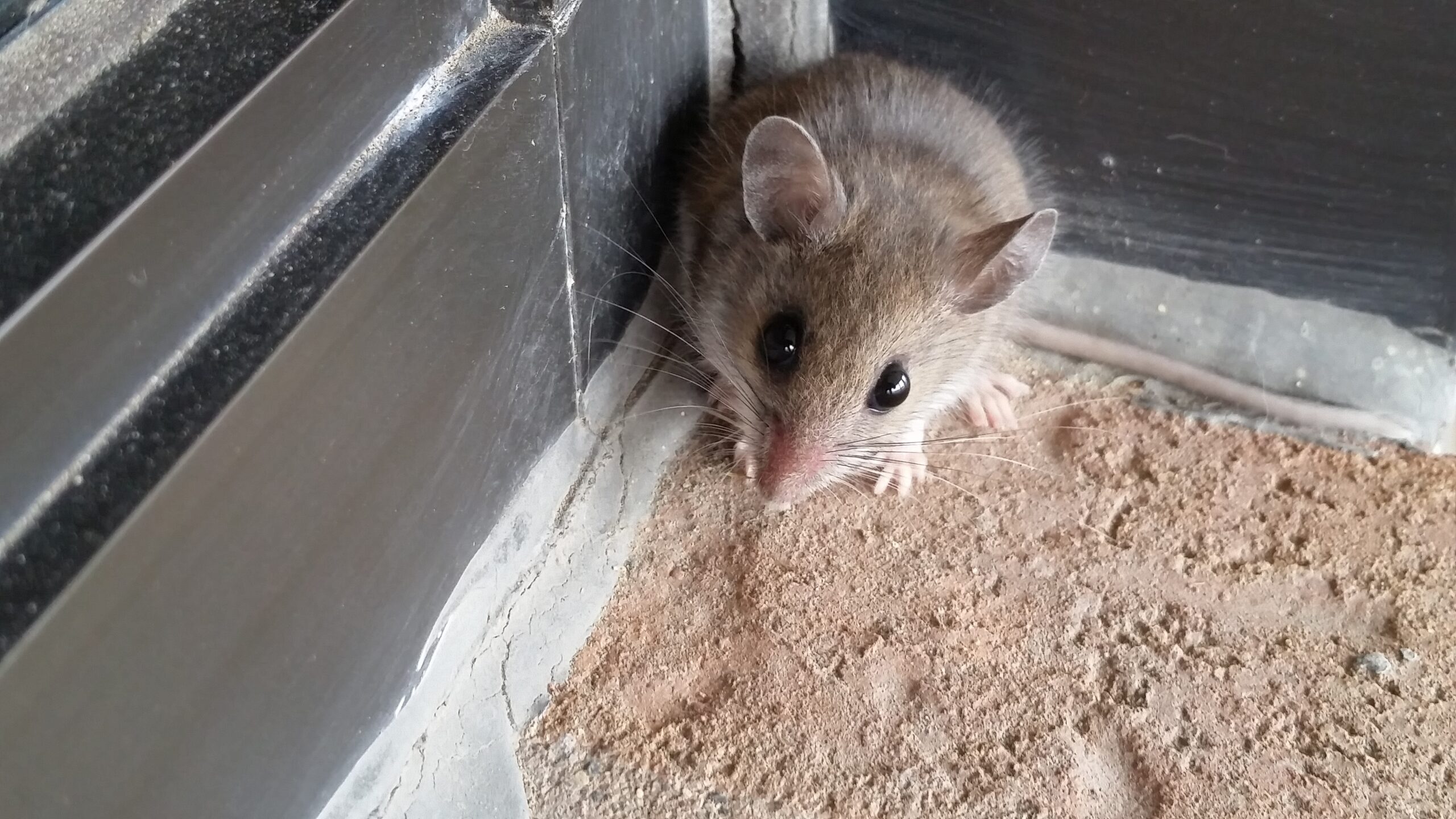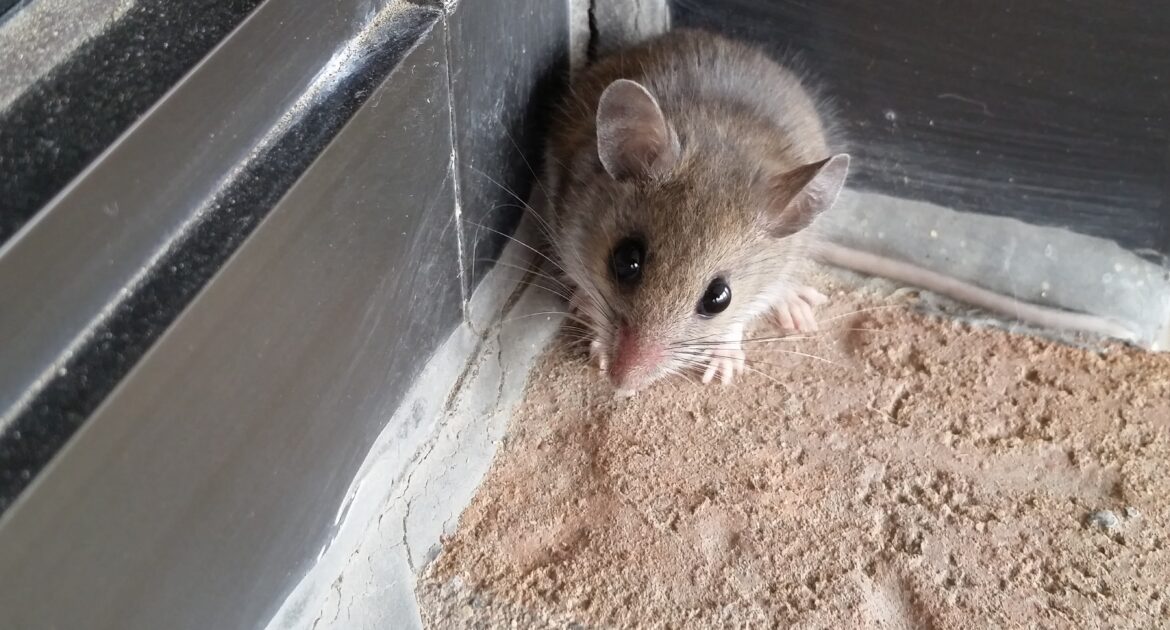Understanding the behaviour of mice is crucial for effective wildlife removal in Durham. One of the most intriguing aspects of these small creatures is their mating habits. Contrary to popular belief, mice do not mate for life; instead, they are known for their high reproductive rates and frequent mating cycles.
This knowledge is essential for anyone looking to manage and keep mice away from their property. By comprehending how mice mate, homeowners can better anticipate potential infestations and take proactive measures.
In this article, our Skedaddle experts provide in-depth insights into the mating behaviours of mice and offer expert advice on managing these persistent rodents, ensuring your property remains free from unwelcome guests.
Understanding Mice Mating Behaviour
To effectively tackle any mouse infestation, it’s essential to understand how mice mate and reproduce. Contrary to popular belief, mice do not mate for life. Instead, they are opportunistic breeders and can reproduce rapidly under favorable conditions.
Female mice reach sexual maturity at about six weeks of age, making them capable of breeding early in their life cycle. They can produce up to ten litters per year, with each litter consisting of 3-14 pups. This rapid reproductive cycle means that a single pair of mice can quickly turn into a full-blown infestation if not promptly addressed.
When conditions are optimal—such as abundant food, water, and shelter—mouse populations can explode. Each female mouse can become pregnant again almost immediately after giving birth, leading to an exponential increase in numbers. Within a matter of months, what started as a minor issue can escalate into a significant problem, overwhelming your home or business.
Understanding the mating habits and reproductive capabilities of mice highlights the urgency of addressing infestations quickly. Early intervention can prevent a small problem from becoming unmanageable. Effective control measures should include sealing entry points to prevent new mice from entering, removing food sources that attract them.
Mice are social creatures and live in structured communities with a dominant male and several females. These communities are often located in close proximity to food sources, making your home an attractive sanctuary for them. Understanding this social structure and their breeding habits is also vital for effective removal and long-term prevention.
Knowing the social structure and mating behaviours of mice, homeowners and wildlife removal experts can implement more targeted and effective control strategies. One of the first steps in mitigating a mouse infestation is to identify entry points and potential nesting sites within and around your property. Since mice can squeeze through openings as small as a dime, it’s crucial to seal any gaps or cracks in walls, floors, and foundations.
Long-term prevention involves maintaining cleanliness and eliminating attractants such as food debris and excess moisture. Regularly clean and declutter storage areas, kitchens, and pantries to remove potential nesting materials and food sources.
By understanding the intricacies of mice breeding and social structures, you can take informed actions to protect your property. Partnering with professional wildlife removal services ensures that you receive specialized insights and comprehensive solutions tailored to your specific situation.
Why DIY Removal Methods Fall Short
It’s tempting to think that you can handle a mouse problem on your own. After all, there are countless DIY solutions available online, from traps to poison. However, these methods often fall short for several reasons. First, they address only the symptoms of the problem (i.e., the mice you see) and not the root cause (i.e., how they’re entering your home). Second, DIY methods can be inhumane and pose risks to other wildlife, pets, and even your family.
Traps and poisons can be dangerous if not used correctly, and they rarely solve the problem permanently. Mice are intelligent and adaptable creatures; they can quickly learn to avoid traps or find alternative entry points into your home. Moreover, using poisons can result in dead mice in hard-to-reach places, creating unpleasant odours and potential health hazards.
The Skedaddle Approach to Mice Removal
At Skedaddle, we believe in a more humane and comprehensive approach to wildlife removal. Our process is designed to not only remove the existing mice from your home but also to prevent future infestations.
Our team of professionals has years of experience in wildlife removal. We understand the behaviour of mice and other wildlife, allowing us to create effective and sustainable solutions. Our expertise ensures that we can quickly identify entry points, nesting sites, and food sources that attract mice to your home.
One of the core values at Skedaddle is our commitment to humane practices. We use techniques that ensure the safe and ethical removal of mice from your property. This not only solves your immediate problem but also minimizes stress and harm to the animals involved.
Our approach goes beyond just removing the mice you see. We conduct a thorough inspection of your property to identify and seal entry points, ensuring that new mice cannot enter. We also provide advice on how to keep your home less attractive to mice by managing food sources and maintaining cleanliness.
We pride ourselves on providing exceptional customer service. From the initial consultation to the completion of the removal process, our team is dedicated to ensuring your satisfaction. We offer follow-up services to monitor the situation and make any necessary adjustments to keep your home mouse-free.
How to Keep Mice Away
Mice are attracted to food sources, so keeping your home clean is essential. Store food in sealed containers, clean up spills immediately, and dispose of waste regularly. Pay special attention to areas where food is prepared and stored, such as the kitchen and pantry.
Inspect your home regularly for potential entry points and seal them promptly. This includes gaps around doors and windows, holes in walls, and spaces around pipes and vents. Even small openings can provide access for mice, so be thorough in your inspection.
Mice love to nest in cluttered areas, so keep your home tidy and organized. Remove piles of paper, cardboard, and other materials that can serve as nesting sites. Pay particular attention to basements, attics, and garages, where mice are more likely to seek shelter.
Keep the exterior of your home well-maintained to reduce the risk of mice entering. Trim bushes and trees away from the house, maintain a clean yard, and store firewood and other materials away from the home. This not only makes your property less attractive to mice but also makes it easier to spot potential entry points.
Why Skedaddle Is Your Best Choice for Wildlife Removal in Durham
When it comes to wildlife removal in Durham, Skedaddle stands out as the trusted choice for homeowners. Our professional, reliable, and service-oriented approach ensures that your mouse problem is handled efficiently and humanely. With our expertise, commitment to humane practices, and comprehensive solutions, you can have peace of mind knowing that your home is in good hands.
Don’t let a mouse infestation disrupt your home and put your family’s health at risk. Contact Skedaddle today to schedule your consultation and take the first step towards a mouse-free home. Our team of experts is ready to provide you with the best wildlife removal services in Durham and help you keep your home safe and secure.




